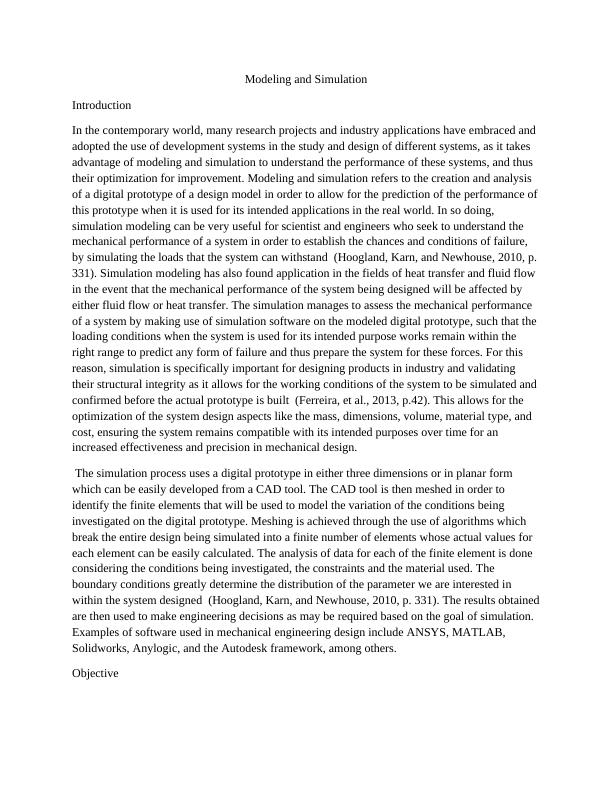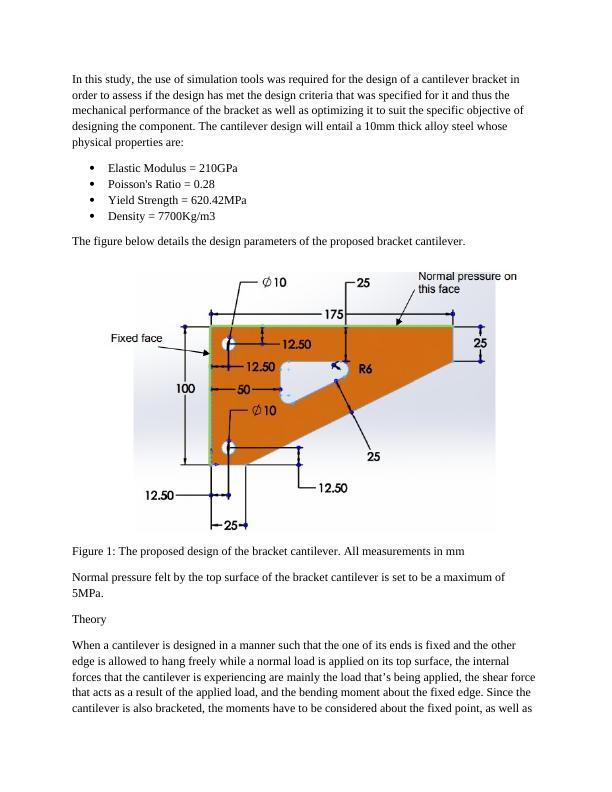Modeling and Simulation: Enhancing System Performance and Design Optimization
Apply simulation tools to assess the mechanical performance of a component and optimize it to meet design objectives.
Added on 2023-04-25
About This Document
In this document we will discuss about Modeling and Simulation and below are the summary points of this document:-
-
Modeling and simulation enable the understanding and optimization of system performance.
-
Simulation modeling is crucial for predicting failure conditions and validating structural integrity.
-
Simulation tools like ANSYS, MATLAB, and Solidworks are commonly used in mechanical engineering design.
Modeling and Simulation: Enhancing System Performance and Design Optimization
Apply simulation tools to assess the mechanical performance of a component and optimize it to meet design objectives.
Added on 2023-04-25
End of preview
Want to access all the pages? Upload your documents or become a member.




